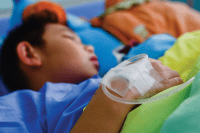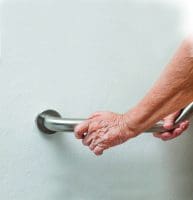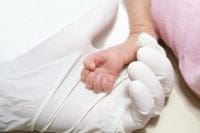Don’t miss this exclusive interview with Marilyn J. Bull, MD, Morris Green Professor of Developmental Pediatrics at Riley Hospital for Children at Indiana University Health. Dr. Bull co-authored the original paper establishing the car seat tolerance screening recommendation for the American Academy of Pediatrics.
Today we’re talking about car seat tolerance screening with Dr. Marilyn J. Bull, Morris Green Professor of Developmental Pediatrics at Riley Hospital for Children at Indiana University Health or IU Health. Thanks for joining us today, Dr. Bull.
Dr. Bull
I am happy to be able to talk to you.
Lisette
All right. So, what is car seat tolerance screening?
Dr. Bull
Well, car tolerance screening is the terminology that is used to explain the evaluation that has been recommended for assessment of infants that have been born prematurely or have specific medical problems prior to hospital discharge in a car safety seat. The incidence of prematurity is defined as infants who are born less than 37 weeks’ gestation. Additional concerns have been raised regarding infants who have neurologic conditions that would include hypotonia or low tone, repaired congenital heart disease, including hypotonia would include infants with Down Syndrome, spina bifida and other neuromuscular conditions.
Lisette
You are an important expert on this topic. You recently authored a commentary in the Journal of Pediatrics and co-authored the American Academy of Pediatrics original paper establishing the car seat tolerance screening recommendation. So, why is it important and recommended by the American Academy of Pediatrics?
Dr. Bull
The major concern is that it is recognized that some infants with specific pre-disposing conditions may experience or have been determined to experience some cardio-respiratory instability which would include apnea breathing cessation, typically identified as more than 20 seconds. Bradycardia, which would explain low heart rate and oxygen desaturation, which is reduction from their normal level of oxygen carrying capacity. So, these are defined as cardio-respiratory instability. And it varies across the country. One of the concerns frequently expressed is that the Academy of American Pediatrics did not define specific criteria for each of those parameters and that therefore the consistency of evaluation of infants who are deemed at potentially increased risk has not been defined as consistent across the country or world. And that the other controversy has been what are the potential outcomes and prior it has not been possible to quantify adverse outcomes of infants who have experienced these respiratory events, including those that occur in car seats. So those have been the problems with the long-term assessment of infants. That research has not been possible to do. But it is recognized that these infants, that a certain percentage and the paper that you referred to was a car seat tolerance screening in late preterm infants that would be infants born 34 to 37 weeks’ gestation do still have an incidence of these problems and I think in the paper that was published it was about 4.6%. And what is critical from a medical standpoint is that that percentage of infants born late preterm did not achieve the same level of cardiorespiratory stability when their position in the car safety seat when they’re in an open crib. And the American Academy of Pediatrics has defined that is the specific criteria for hospital discharge which would include stability in an open crib. So, there is a variance then in certain infants who are at increased risk.
Lisette
Okay, so the paper that you had mentioned, what do nurses take away from that paper? I believe that there are three points that the authors made.
Dr. Bull
Yes, well the three major points are that infants with, let me just define that specifically that it’s important to determine that cardiorespiratory stability prior to be discharged and the importance of the appropriate use of car safety seats at the time of hospital discharge. And then the value of having a hospital discharge policy in place. And those factors were all present in the initial and currently reaffirmed policy on safe transportation of preterm and low-birth weight infants by the American Academy of Pediatrics in 2011. The guidance provided by the Academy of Pediatrics is all reviewed every three years and either revised, reaffirmed or retired. And this policy is under review but has been reaffirmed since 2011. So, I think it’s important for nurses to, nurses play such an important role in establishing the health and well-being of infants in both normal nurseries and in high-risk NICUs and that they should be really well-informed about the safe transportation of infants. We know that the use of car safety seats properly for every ride in the car has reduced deaths and serious injury by very great percentage over the past 20 to 30 years in this country. So, nurses setting the stage for patterns for life for infants play an extremely important role as they help parents identify the correct car seat for use for their infant and then in the case of potentially at-risk infants establishing the car safety seat tolerance screening. I want to point out this is not a test. This is a screen that then requires attention to the potential risk for an infant and additional medical intervention or greater maturity or potentially an alternative form of transportation such as a car bed may be useful for some babies.
Dr. Bull
In thinking of the role of nurses, that they’re in position to, I would hope, requests, if not present, a hospital discharge policy. The American Academy of Pediatrics, the National Highway Traffic Safety Administration, the Children’s Hospital Association and the National Safety Council developed a document that defines the development of hospital discharge policies and it is strongly recommended for consistency that hospitals make a policy and implement it. The important component of that, of course, is proper training. And in some instances, nurses do take the National Child Passenger Safety Technician curriculum and are certified in child passenger safety, but that’s not necessarily the case. A certified child passenger safety technician, however, should be part of the training of nurses for proper positioning and selection of car seats, proper positioning of the infant and providing information for parents prior to hospital discharge and that may be a technician that could be within the hospital environment or potentially in some settings, depending on the community, someone that is specially trained and would come in and help nurses develop their expertise in that area. So it’s important that they know the resources for the safe travel that would be a seat that is appropriate for the size of the infant, preferably it be the seat that the child is going to use for discharge if that’s a seat that’s being used for the tolerance screening. They should be able to assess the infant in that car safety seat and then provide education of the family that would include some hands-on installation/instruction so the family can demonstrate they know how to use the car seat and that they would be provided on information for installation of the car seat in the family’s vehicle. It’s not possible always for nurses to be the people that would do that installation or instruct the parents installation, but they need to be able to provide the family the resources where they can do that in their community. That’s a very quick overview.
Lisette
Last question. What would like to leave nurses with from your research and work in this area? What’s a final thought?
Dr. Bull
Well, I think the final thought is that nurses are such an important part of the investment in the health and development of infants from the very new born period. And they have an important role in process and that involvement and setting the stage for proper safe transportation of newborns, whether they’re full-term and health or born prematurely and have special needs is extremely important. And I would hope that they would be familiar with the research as it evolves, the documents for hospital discharge as I described from the National Highway Traffic Safety Administration, the Children’s Hospital Association at the AAP and, of course, the safe transportation of low birthrate and premature infants as published by the American Academy of Pediatrics.
Lisette
Well thank you so much for your time today, Dr. Bull.
Dr. Bull
Well you are most welcome. Thank you for considering this important topic.


















